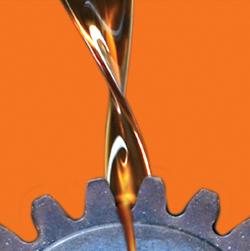 "My supplier is pushing hard to move his synthetic gear oils into my operation. His position is that the units run too hot for long-term use of mineral oils. At what temperature should I switch to a synthetic lubricant for a non-circulated gearbox?"
"My supplier is pushing hard to move his synthetic gear oils into my operation. His position is that the units run too hot for long-term use of mineral oils. At what temperature should I switch to a synthetic lubricant for a non-circulated gearbox?"
First, the term synthetic is very broad, so we assume you are referring to lubricants that are formulated using polyalphaolefin (PAO) synthetic base oil.
There is no single temperature point that dictates a time to move to synthetics. The decision is dependent on equipment continuous loads and shock loads, equipment availability for routine maintenance, criticality of the application, component life cycles, lubricant life cycles and failure modes among other things.
Generally, the rate of lubricant degradation doubles with every 18 degrees F increase in temperature. Once formulated with antioxidant additives, PAO-based lubricants have a lower baseline rate of oxidative degradation. At low temperatures, a PAO's increased oxidative life may not be noticeable, particularly if you have to change the oil at some point for other reasons. At higher temperatures, the synthetic may last noticeably longer.
Typically, you begin to notice the extra life provided by a PAO above 160 degrees F. If it is above 180 degrees F, and especially 200 degrees F, the difference in oxidative life becomes quite apparent. However, the point at which a change to synthetic is justified is dependent perhaps on a handful of additional "program management" parameters such as:
1. Do you intend to run your gear oils with an appropriate use of filtration and oil analysis to support life-cycle extensions for many years?
2. Are you currently doing oil analysis and performing condition-based changes?
3. Do you have, and have you communicated to your lab, oxidation limits that flag impending oxidation problems?
4. Does the machine's operating temperature vary a great deal (a PAO's high viscosity index enables it to operate across a wider temperature range)?
5. Do you have an effective contamination control program in place that will enable you to fully exploit the PAO's extended life?
With the appropriate management strategy, a change to a high-performance product can actually cost considerably less than the equivalent mineral oil product type.
Outside of these considerations, somewhere around 165 degrees F represents the point at which you probably should begin to consider the use of synthetics for the sake of lubricant longevity, if not for the sake of reliability.
Read more on best practices for lubricants:
Is Hot Oil More Likely to Foam?
Are Higher-Priced Lubricants Better?
The Importance of Timely Oil Drains


.jpeg)

